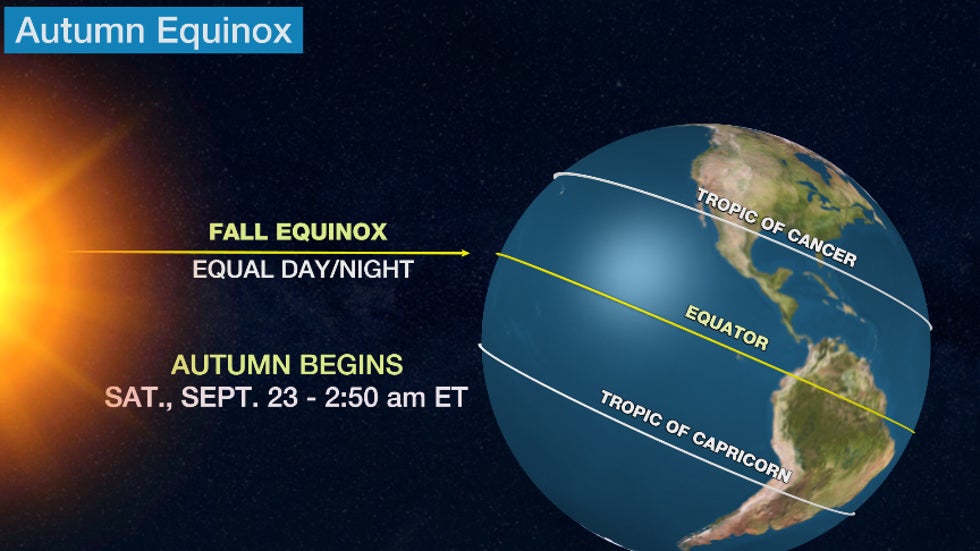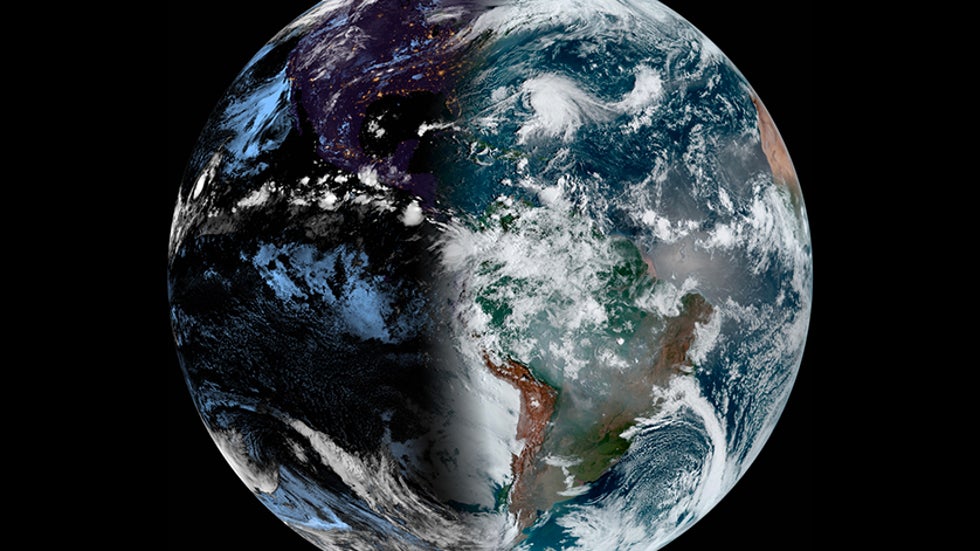Chris Dolce
Fall-like weather has already arrived this month for some, but the first day of the astronomical season is Saturday.
Here are four things to know about the fall, or autumnal, equinox.
1. Fall's start time on Saturday will depend on where you live: If you are in the Eastern time zone, then fall officially begins when most are sleeping at 2:50 a.m., local time. The start of fall will be at 1:50 a.m. in the Central time zone and 12:50 a.m. in the Mountain time zone.
The start of fall will actually be in the final minutes of Friday in the Pacific time zone, or at 11:50 p.m.
(MORE: Weather Changes You Can Expect In Fall)
2. Here's why there is a down to the minute time that marks fall's beginning: Twice a year, around March 20 or 21 and Sept. 22 or 23, the sun's rays shine directly over the Earth's equator. In the Northern Hemisphere, these are known as the spring, or vernal, equinox and the fall, or autumnal, equinox.
The specific time, in the case of this year 2:50 a.m. EDT, marks the passage of direct sunlight over the equator from the Northern Hemisphere to the Southern Hemisphere.

3. Day and night are balanced on the equinox, but daylight will now decrease: Instead of a tilt away from or toward the sun, the Earth's axis of rotation is perpendicular to the line connecting the centers of the Earth and the sun during an equinox.
Because of that, day and night are balanced to nearly 12 hours each all over the world. You can see this in the half sunlit and half nighttime (dark areas) satellite image from the Sept. 23, 2019 equinox.
 This GOES East image was captured on Sept 23, 2019, at 8:00 a.m. EDT
This GOES East image was captured on Sept 23, 2019, at 8:00 a.m. EDTFrom this point on, daylight in the Northern Hemisphere will gradually grow shorter until the winter solstice, which occurs on Dec. 21, 2023. That's because the Earth will be in the process of tilting away from the sun in the Northern Hemisphere.
(MORE: Fall Foliage Tracker)
4. Everything is opposite for the Southern Hemisphere: South of the equator, the September equinox marks the beginning of spring.
Daylight will now grow longer until December's start of summer in places like Australia and South America since the Earth will tilt toward them.
Chris Dolce has been a senior meteorologist with weather.com for more than 10 years after beginning his career with The Weather Channel in the early 2000s.
The Weather Company’s primary journalistic mission is to report on breaking weather news, the environment and the importance of science to our lives. This story does not necessarily represent the position of our parent company, IBM.
The Weather Company’s primary journalistic mission is to report on breaking weather news, the environment and the importance of science to our lives. This story does not necessarily represent the position of our parent company, IBM.

No comments:
Post a Comment